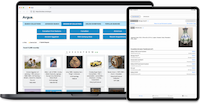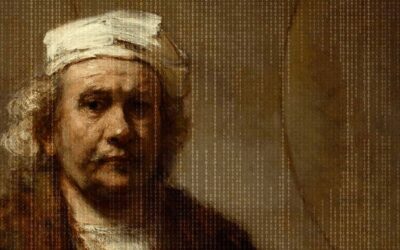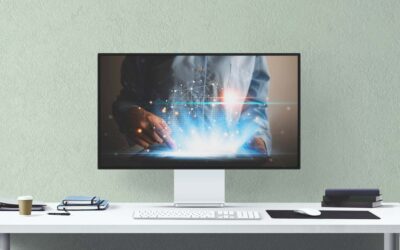Museum TrendsWatch 2024:
AI Adolescence in Museums

Rachael Cristine Woody
The Center for the Future of Museums (under the American Alliance of Museums) publishes a TrendsWatch report annually. The report includes topical deep dives and insight into emerging trends in the field.
With a combination of strategic foresight, global visioning, and keeping up with the latest in ethics and technology; the Center delivers content on wide ranging topics housed within a theme. This year the report theme is TrendsWatch: Navigating a Volatile Future and includes three main trends: Culture Wars 2.0, AI Adolescence in Museums, and Decarbonizing the Future. Then, in the pattern they adopted last year, a Short Take: Dropping the Degree; a For Your Radar: Digital Twins and Doom Loops; and a Trend Alert: Combatting the Loneliness Crisis.
The intention of this miniseries is to offer TrendsWatch snapshots to support distillation and application at museums. For our purposes, we will cover each trend with a post.
Today’s post will focus on Trend #2: AI Adolescence in Museums. For this main trend I will provide a summary of the topic as presented by the Center (The Challenge section), how the trend shows up for museums (What This Means for Museums section), and the Center’s advice to museums (Museums Might). Throughout, I will offer analysis, insight, and tie-ins to related topics the Lucidea Think Clearly blog has covered previously.
The Challenge
This trend takes on the latest evolution in Artificial Intelligence (AI) known as generative AI or GenAI. Moving on from data consumption, GenAI is the creation of content, be it text, images, or sound. The Center acknowledges the threat GenAI can pose—and in some instances, damage already done—with a full-page side panel titled How Generative AI Might Harm the Creative Economy, ultimately making the case for thoughtful regulation so that GenAI is a “tool to enhance human creativity rather than a replacement for it.” Elizabeth Merritt, Founding Director of the Center for the Future of Museums, goes on to summarize what information professionals already know: AI is only as good as the information it has access to, and there is a lot of bad data out there to infect AI with bias and BS. Finally, as is typical when fast moving technology meets slow government, Merritt points out that laws and policy just cannot keep up.
What This Means for Museums
Museums have jumped into GenAI experimentation in various ways, and TrendsWatch shares a few examples:
- Developing exhibitions from selecting works to writing labels.
- Generating communications for members and donors.
- Writing reports and grant applications.
Ultimately, the question Merritt poses to the museum field is: How do we want to use GenAI? Regardless of the answer, Merritt suggests that museums may find themselves in the role of arbiter to verify what she terms as “content provenance.” With the high percentage of public trust in museums, this role makes sense, though the risks appear to outweigh the benefits. Additionally, the current and potential impact of GenAI on artists, researchers, and other creators is closely tied to museum ethics. Merritt asks how might museums help protect the creative and academic audiences while still exploring the adoption of GenAI. The piece concludes with advice that we should all consider—primarily to increase our AI literacy so that we can all knowledgeably engage with caution and inspiration.
Museums Might (the advice section)
The following section is advice provided by Merritt for museums and their staff to consider. I have added in clarification and additional thoughts or resources as applicable.
- Offer education on AI and the complexities of the issues it raises—ethical and legal.
- Explore how GenAI can be used to enhance collection, exhibits, programs, etc.
- Similarly, explore how AI can be used to help relieve time-consuming tasks. You can read more on this from my coverage of AI and its potential impact on collections via “Ask Me Anything (AMA): The Impact of AI on CMS Data Creation and Enhancement,” on Lucidea’s Think Clearly Blog.
- Identify and educate Board and staff on ways AI is already or could be present in your work, and how it could or should be used moving forward.
- Participate in advocacy and policy development for AI.
Conclusion
If you have not experimented with GenAI, now is the time. The earlier we experiment with technology the easier it is for our brains to adapt with that technology and understanding the evolution of its application. Please join us for our next post on trend #3: Decarbonizing the Future.

Rachael Cristine Woody
Rachael Woody advises on museum strategies, digital museums, collections management, and grant writing for a wide variety of clients. She has authored several titles published by Lucidea Press, including her newest: Demystifying Data Preparation for a New CMS. Rachael is a regular contributor to the Think Clearly blog and always a popular presenter.
**Disclaimer: Any in-line promotional text does not imply Lucidea product endorsement by the author of this post.
Never miss another post. Subscribe today!
Similar Posts
No-Code Digital Storytelling Example: Rembrandt’s Self-Portrait at Kenwood House
Explore how English Heritage’s Kenwood House uses the no-code platform Shorthand to bring Rembrandt’s Self-Portrait with Two Circles to life through visual storytelling and interactive design.
Exploring No-Code Digital Storytelling: Hoover’s “Fanning the Flames” Exhibit
Explore no-code digital storytelling with Hoover’s ‘Fanning the Flames’ exhibit. See how interactive tools (Deep Zoom Color Compare & Hot Spot) enhance user engagement and the visual experience.
An Introduction to Scrollytelling for Museums
Discover how museums use scrollytelling and digital storytelling platforms to create immersive narratives. This introduction explores key concepts and approaches to interactive storytelling.
Exploring Self-Determinate Multiple Pathways: An Example of Digital Storytelling
Discover how self-determinate multiple pathways offer flexible interactive storytelling in museum exhibits. Learn from the Tenement Museum’s ‘Your Story Our Story.’







Leave a Comment
Comments are reviewed and must adhere to our comments policy.
0 Comments